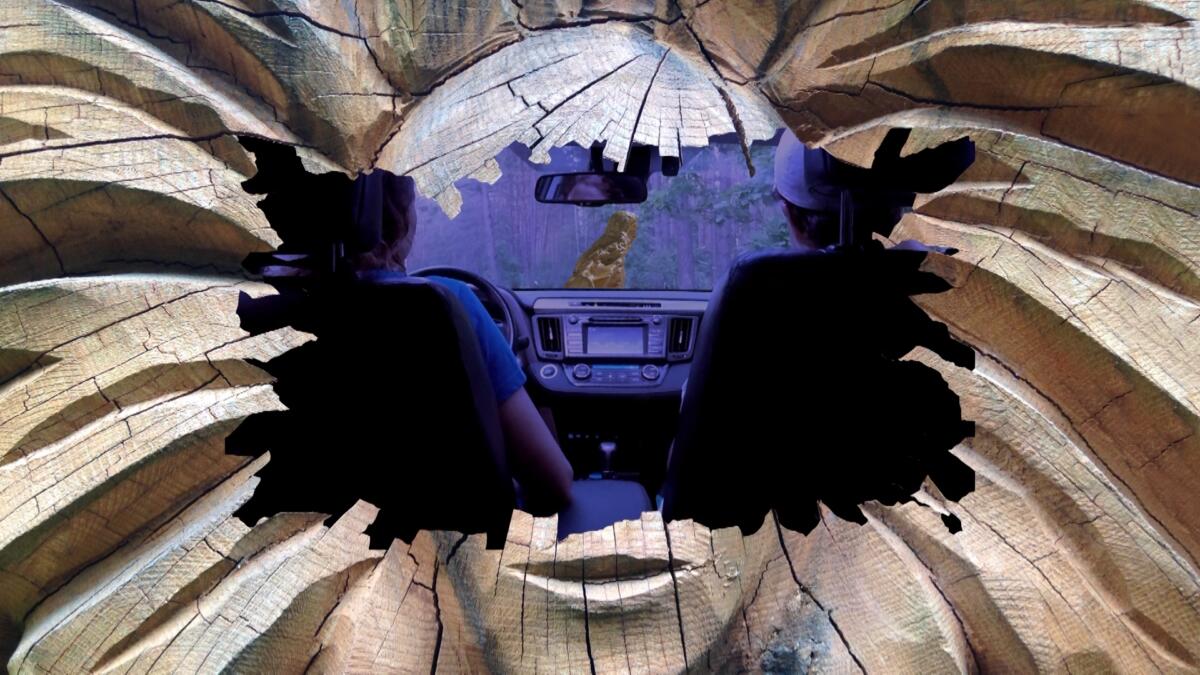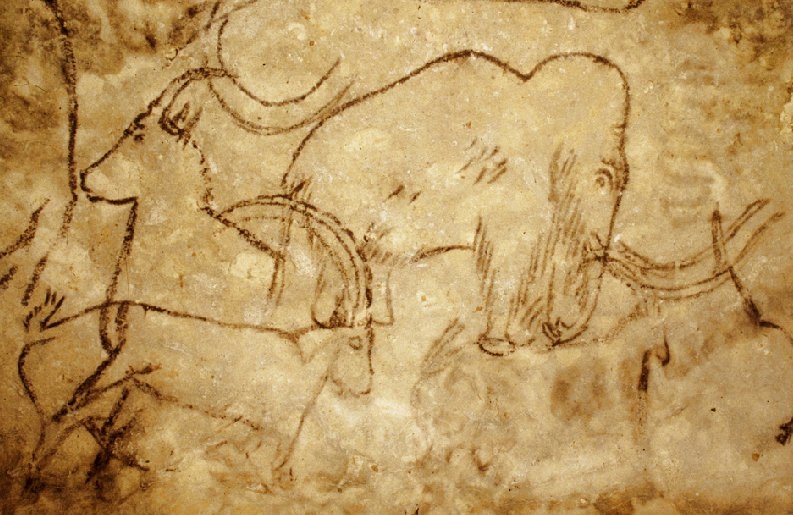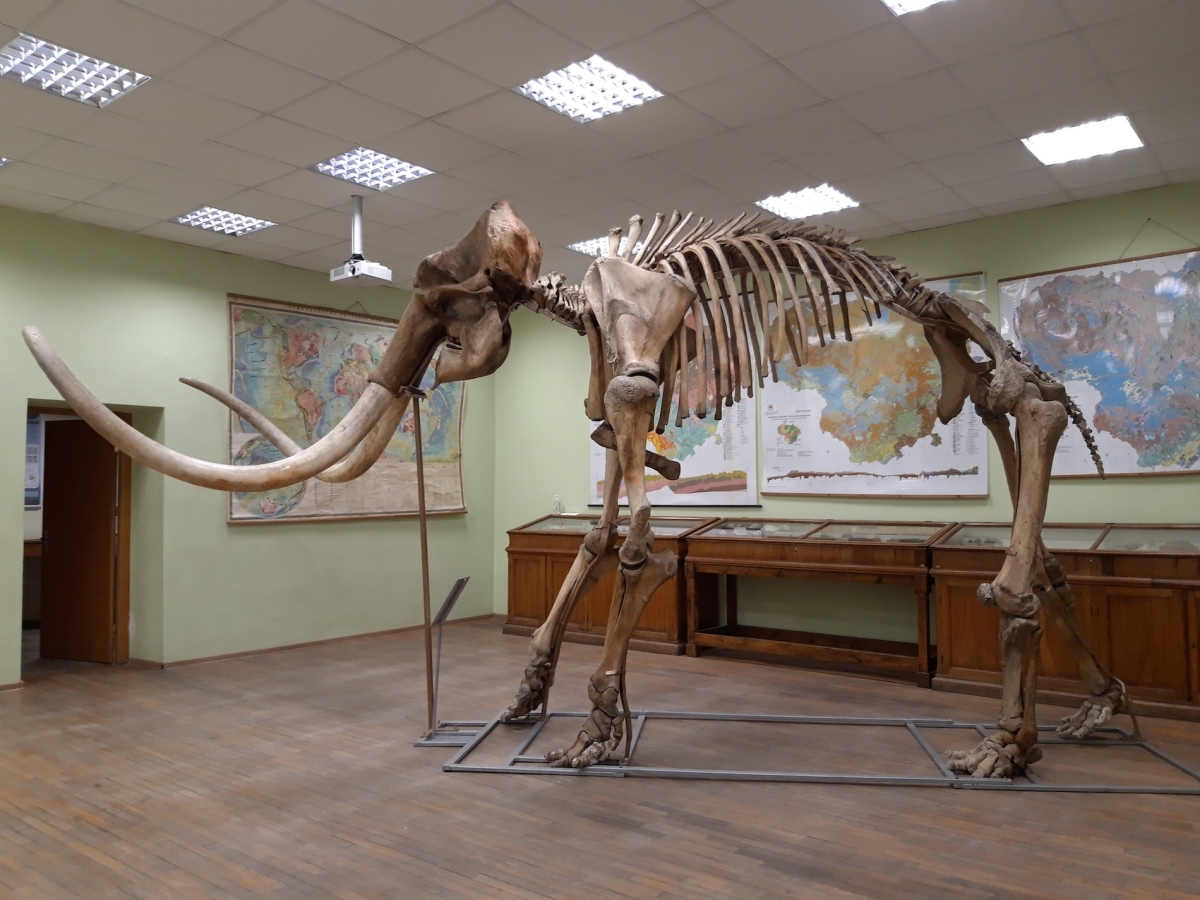
Scholarly interest in roots and routes stems from the evolutionary perspective on natural and human history. The great nineteenth century quest to unlock the secrets of nature and belief in a secular narrative of human origins drove the “great explorers” to try to pin down rocks, plants, animals and ethnic groups to a particular place and time. As societies modernised, to be able to identify and locate one’s origins became even more politically important: this was the age of nascent nationalism and fast expanding colonialism where the right to enjoy property and liberty depended upon one’s roots and routes. The rootless alternatives were grim. As the British sociologist Tony Bennett showed in his Pasts Beyond Memory, the condition of terra nullius – where particular people could not be “geologically“ pinned to a particular territory – created a space for what was at that time presented as legitimate conquest, dramatically expressed in the dispossession of the Aboriginals from their land in Australia.[1] Rootless existence was a route to demise.
To avoid this, in modern Europe people sought to underpin their claims to identity and legitimacy with science, while scientists contributed to nationalist efforts to scientifically ground political identity and legitimacy. The results, however, were ambivalent. As the sciences became increasingly sensitised to the cumulative, transient character of reality, a new standard of scientific knowledge was introduced, a knowledge that was alert to the course of the events that had shaped a given phenomenon. The central driver of this concept was Charles Darwin’s On the Origin of Species (1859), which not only identified the principle of natural selection as the motor of biological history, but in doing so established that the general law of natural selection could have different effects depending upon the particular circumstances of the environment in which it was acting. Further, it demonstrated not only that all humans were inextricably connected to one another and to other species, with their form and function a product of their particular historical route to the present, but also that form and function were often deceptive. Many species which looked distinct might have common origin, while similar functional appearances might belie very different biological genealogies. This was a radical historicization of nature in which the immediacy and brevity of the Biblical history of divine creation was displaced by a story in which the route to the present was still a story of roots, but one in which the stage on which the drama was played out and the nature of the actors playing it were themselves subject to change, and the audience was dependent upon the mediating presence of the scientist for their understanding.
What are we to do with this European carbon, coal, steel and nuclear mammoth? Will it be partitioned to serve nationalist and populist purposes, scavenged to build new mythologies?
This political epistemology of scientific, evolutionary secularisation opened-up a vast resource for social identity building. With Darwin, humans, along with stones, plants, and animals, acquired deep biographies in which the social, biological and geological were explosively combined into the concept of ethnic or ‘racial’ trajectories. Nineteenth-century archaeologists and ethnographers enrolled the diverse forms of nature, from stones to animals, in the project of tracing the cultural history of peoples. These visions cast their searchlight back deep in time. Not only were living creatures, such as ‘national’ plants and animals mobilised, but beasts that had become extinct were also put to work, enlisted to bolster new political subjectivities. Strange fossils were incorporated into the study of the origins of European civilisation and claims to territory, mammoth fossils were at the heart of that process. Mammoth fossils marked a point of connection between the Holocene, the arena of human history, and the Pleistocene, but also between northern Europe and the Mediterranean.[2]
European civilisation has been marked with enduring fascination with fossils, and mammoths in particular. The relics of mammoths were woven into ancient folklore. For instance, the Ancient Greeks thought that fossilised elephant bones were the bones of the cyclops.[3] In the Middle Ages, mammoth fossils were perceived to be divine signs.[4] The special status of fossils was not surprising: the finds of giant fossils were quite a rarity in the Western part of Europe. Although fossil finds became more common in Western Europe in the modern era, with evidence of prehistorical beasts being discovered in, for instance, the Rouffignac caves and Lascaux drawings in France, as well as archaeological digs, most Eurasian giant fossils are found in Eastern Europe, something which, as we shall see, would later be important for bridging East and West when the ice age archaeology intersected with the Cold War.[5]

Cave painting in the Grotte de Rouffignac
In the age of nationalism, however, strange, rare and treasured, North-East, West and South European fossils were put to do political work: the mammoth’s remnants and images were woven into ethno-narratives, employed as proof of the indigenous presence, be they “the Gauls” in what is now the territory of France, the Siberian peoples, or the Balts.[6] Colonisers used fossils to bolster their self-images of greatness; colonised peoples or smaller territories turned to fossils to identify and secure the deep ethnic past, claim “their” territory and struggle against colonisation.
For the ancient Greeks, however, it was not the fossils that were strange: these they saw as visible proof of their myths and legends. Rather, it was the North that was strange, as it arrived in the form of the Barbarians. As George Simmel wrote in his essay on strangers, the figure of the Barbarian, although undeniably human, was that of a perfect stranger in ancient Greece because the Northern Barbarians were denied any formative social relation, a relation which cyclops could enjoy. Ultimately, however, for Simmel what really defined the meaning of the stranger was one who “comes today but stays tomorrow”.[7] In the Barbarian world of the modern North the mammoth fossils appeared as perfect strangers: they arrived from the extremely remote past, but they stayed, becoming part of the roots of the present and the route to projected national futures as they absorbed the new myths and emotions projected at them, calm, shrunken, weathered and looming large with feeling for the past and the future.
From the Mediterranean perspective, the historian Peter Stadius suggests, the North was constructed as an “uncivilised,” “confident” and “dangerous” region in texts like Tacitus’s Germania (98 AD), and indeed some aspects of this hostile vision of the Northern stranger were themselves culturally fossilised as “Barbaric” (violence, drunkenness and lack of aesthetical appreciation). Over time, however, the North itself fractured into the affluent Protestant and Nordic countries and Catholic and Orthodox Eastern Europe, and some stereotypically ‘Northern’ attributes, industriousness, wealth and a public spirit, were mythologised as “civilised.”[8] These distinct confessional, economic and political systems converged into imperial worlds centred on the Baltic and the Mediterranean, as shown in the ground-breaking studies of Kirkby and Braudel.[9]
[…] in modern Europe people sought to underpin their claims to identity and legitimacy with science, while scientists contributed to nationalist efforts to scientifically ground political identity and legitimacy. The results, however, were ambivalent. As the sciences became increasingly sensitised to the cumulative, transient character of reality, a new standard of scientific knowledge was introduced, a knowledge that was alert to the course of the events that had shaped a given phenomenon.
The Baltic world constituted more than the area that is now the three Baltic states, which were referred to as part of “northern Europe,” up until the nineteenth and twentieth century, and the term ‘Baltic’ has a complex history.[10] The name Mare Balticum dates back to the twelfth century, while der baltische landerstaat referred to the Livonian Baltic German territory. The term “Balts,” referring to an ethno-political grouping came into circulation as the result of German linguists’ identification of the Balto-Slavonic language family and archaeological research in the late nineteenth century which deployed the term in a quest to uncover “the ancient Balts.” These linguistic, archaeological and geological roots, which were layered chronologically and spatially to compose “the Baltic states,” provided the basis for resisting the precarious status of terra nullius. They were, instead, configured as the foundation of a geocultural community, with roots deep beneath the soil of the land, manifest in ancient stones and fossils which testified to the presence of ancient “Baltic” peoples in possession of the area and laid the foundation for a route to the future as a coherent cultural and political entity. For example, as I show elsewhere, amber was constructed as “Lithuanian gold,” a stone that marked Lithuanian national distinctiveness.[11] Fossil finds were used to enhance the Baltic claim to deep roots and to contest imperial colonisation. One can understand the enthusiasm of Eduardas Volteris, a Lithuanian ethnographer and archaeologist, who wrote in 1922 about finds of “Lithuania’s mammoths”: the humble fossil bones for him were windows deep into “Lithuania’s past”.[12] Archaeological digs in the 1930s and 1950s discovered mammoth tusk and teeth in Lithuania that were radiocarbon dated to the middle Weichselian glaciation period, and similar findings were made in Latvia. The “Estonian” mammoths appear to have been amongst the last to survive, dating from the very shift from the Pleistocene to the Holocene.[13]
It would be a mistake though to attribute the fascination with mammoth fossils solely to the ethnographic imagination. A good case in point is the Baltic mythology and literature, which are not strangers to giants and fossils. The famous Latvian mythical figure, Lāčplēsis fought a giant (the epic was written in 1872-1887), and so did the Estonian hero, Kalevipoeg (published in 1853). However, the mammoth itself commanded its particular space in the cultural imagination in response to the malaise of modernity, such as the dysfunctional Soviet bureaucracy and damaging projects of industrialisation. For instance, the popular drama Mammoth Hunt (1968) by the Lithuanian writer Kazys Saja, criticised the fossil-like passivity and compliance of the Soviet subject. The figure of the mammoth as a stranger in the newly forged Soviet urban society was introduced by the Lithuanian poet Sigitas Geda in his collection Homeland of Mammoths (1985). While this book was heavily censored, Geda used mythological tropes of fossils to explore the limits of Soviet modernisation, where the grids of electric lines and tarmacked roads could not suppress the archaic spirit or erase the deep roots.[14]

View of the exhibition ‘On the footsteps of the Vilnius’ mammoth’ at the Museum of Geology of the Vilnius University
Furthermore, thinking with the strange fossils assumed strategic importance in the era of giant technological systems, systems that threatened to bolster and then to fossilise the whole human civilisation: electric grids, nuclear power and nuclear weapons, road networks and dams encasing wild rivers. It is during the Cold War that mammoth fossils, as Dmitry Arzyutov suggests, began to assume an increasingly visible role, making environmental encounters possible between researchers and indigenous peoples, as well as political regimes across the Iron Curtain. The histories of the mammoth, the giant, and mankind, the greatest species on the Earth, began to emerge as means of bridging the gap between strangers, building connections through their universality rather than their distinctiveness. In this way, the fossil stranger brought together both human strangers separated by political divisions, and simultaneously linked human to pre-human natural histories and embedded the fate of Cold War mankind squarely in their shared natural environment.[15] The shared roots of humankind evidenced in the geological residue of the fossil record testified to the shared route embarked upon by societies on both sides of a Cold War that was transforming the Earth and its climate through techno-science. Of course, this was not in itself new: the idea that people are shaped by their environment was proposed by Aristotle. In the eighteenth and nineteenth centuries, it was developed in the philosophies that linked climate and civilisations in the writing of Montesquieu and Goethe.[16] The environment was thought to be expressed in arts and culture: thus the historian Hippolyte Taine linked artistic styles with local climatic conditions, eloquently describing the ancient Greek culture as being conditioned by the azure expanse, orange fruits dropping from the tress straight into the translucent waves of the Mediterranean. Towards the end of the nineteenth century it became increasingly clear that climates were not local, but global. The environmental dynamic, in turn, was chaotic, violent and destructive. Its civilizational and cultural expression had to be rethought. Mankind began to acquire a biography of a new kind – as a global species that coevolved with the Earth in the writings of Alexander von Humboldt (1800s), Vladimir Vernadsky (1800s-1900s), Nikita Moiseev (1970s-1990s) and Paul Crutzen (2000s).
The term “Balts,” referring to an ethno-political grouping came into circulation as the result of German linguists’ identification of the Balto-Slavonic language family and archaeological research in the late nineteenth century which deployed the term in a quest to uncover “the ancient Balts.” These linguistic, archaeological and geological roots, which were layered chronologically and spatially to compose “the Baltic states,” provided the basis for resisting the precarious status of terra nullius.
The question now was to what sort of future would these routes lead? Is mankind itself a future fossil? The mammoth was a stranger precisely because it was only fossil: it did not long survive the transition from the Pleistocene to the Holocene. Will mankind survive the transition to the Anthropocene? What kind of roots will the people of the future find in our fossilised remains? Just as mammoths migrated and left their trace in the territories between the Mediterranean, the Baltic and the Arctic seas, so the pre-fossils of the twentieth century began to cover this space in the form of grids, roads, pollutants. The folklore mythologies of giants and heroes were replaced with the twentieth century mythologies of megastructures and heroic inventors. This pan-European infrastructure was both the medium and the message: the entire project of the European Economic Community re-layered the material and social realities to enable the fragmented and alienated postwar communities to form new allegiances and forms of collective life. In this process, new co-stabilities and co-vulnerabilities were constructed. Systems builders, as showed by Per Hogselius and others, laid vast connecting infrastructures from the West to East and from the North to South.[17] Europe was re-shaped with grids of electric current and grids of environmental measurements. The new census of nature and atmosphere took place, to manage transboundary pollution: acid rains, downstream releases and nuclear fall-outs.[18] Just like the mammoth, only very rarely could these megastructures be seen in their full size: they revealed themselves to the onlooker in parts, when particular components scarred the everyday reality.
Looking back from the twenty-first century, it is not quite evident what we ought to make of these military-industrial roots and routes. One thing is clear: we are leaving a very strange fossil for the future: man-made radioactive isotopes, which will remain active for tens of thousands of years. Radioactive fossils will be the markers of our nuclear maritime civilisations, as they lurk in the White Sea, the Baltic Sea and the Mediterranean.[19] For Kirkby and Braudel, the seas served to unite and integrate, to open-up shore communities to global exploration and exchange. But in the world of nuclear fossils, the Mediterranean and Baltic worlds emerge as equally parochial spaces, scarred with the legacies of colonisation, be they Soviet in North Eastern Europe or West European in Northern Africa.

‘Following the mammoth’, 2019, photo courtesy of Vilnius Municipality
This paradoxical situation is typical of nuclearity. As Gregoire Mallard put it, “nuclear opacity consists in revealing part of the truth but not the whole truth”. Nuclear opacity results from the “the struggles of classification” into military and peaceful nuclearity. It shields institutions from assuming responsibility. It reassures the domestic public that the mammoth nuclear industry is under control.[20] At the same time, the nuclear opacity covers up the colonial roots and routes. The establishment of a pan-European nuclear agency, the Euratom (1957), as Mallard showed, was part of West European atomic federalism that enabled the French to build nuclear weapons with the support of Italy and West Germany and test them in Africa.[21] Northern Europe, under the shadow of the Cold War nuclear empire of the Soviet Union, was shaken by the bomb tests in Novaya Zemlia. The Cold War maritime civilisations rose to protest against the nuclear barbarians. The French tested their first nuclear bomb in Algeria in 1960 and continued the test programme after Algeria’s independence, until 1966. Anti-nuclear protests emerged in the Mediterranean in the 1950s, mainly targeted against the nuclear tests and the weapons stored in France, Italy, Germany and Turkey.[22] The 1970s saw the Spaniards, French and Italians protesting against the building of nuclear power plants.[23] In the 1980s, the Lithuanian protest against the building of the third reactor at the Ignalina nuclear power plant marked the beginning of the establishment of the national liberation movement and the start of de-Sovietisation. Chernobyl’s fall-out contaminated both the Baltic and Mediterranean seas, although at the time of the disaster EDF claimed that the contamination of French territory in the nuclear testing period in the 1960s was greater.[24] Radionuclides, however, continued to stream from the Black Sea, which was worst affected, to the Mediterranean via the Bosphorus strait.[25] At the moment of writing, the European nuclear future remains opaque. It is quite clear that a proper “nuclear renaissance” is unlikely: European societies refuse to accept living with the additional nuclear risk that large numbers of new nuclear power plants would pose. It is difficult to build consensus among communities who have been asked to host nuclear waste sites. The radioactive nuclear fossils, in this way, are strangers that are unwanted but here to stay.
What are we to do with this European carbon, coal, steel and nuclear mammoth? Will it be partitioned to serve nationalist and populist purposes, scavenged to build new mythologies? Will it be monumentalised as a lesson for the future, the scaffolds and grids of the infrastructure that accommodated our carbon civilisation, to be preserved and exhibited? Is the industrial heritage the most authentic relic of the twentieth century Europe, should we acknowledge and embrace our ugly fossil industries, fossil cities? Could we estrange them, repurposing them to work to make encounters with the extra-European futures possible? The challenge, perhaps, is to articulate a strange fossil vision, sensitive to the transient, cumulative aspects of our lives as they stretch in ebbs and flows, becoming strange ourselves and others.
This text was commissioned by “Roots to Routes” – a collaboration between artists, curators and non-profit organisations from the city of Marseille and the Baltic countries, curated by Merilin Talumaa, Maija Rudovska and Justė Kostikovaitė, taking place in Marseille as part of Manifesta 13 Biennial programme “Les Parallèles du Sud” from 28 August to 25 October 2020. The project invites strangers to encounter the unknown and unfamiliar within the urban environment, while exploring and challenging concepts of ‘homebase’, ‘belonging’ and ‘identity’.
[1] Tony Bennett, Pasts Beyond Memory: Evolution, Museums, Colonialism (London: Routledge, 2004).
[2] Dmitry Arzyutov, “Environmental Encounters: Woolly Mammoth, Indigenous Communities and Metropolitan Scientists in the Soviet Arctic,” Polar Record 55 (2019), 142–153; Nikos Poulakakis et al, “Ancient DNA forces reconsideration of evolutionary history of Mediterranean pygmy elephantids,” Biol Lett. 2, 3 (2006): 451–454.
[3] Adrienne Mayor, The First Fossil Hunters: Dinosaurs, Mammoths, and Myth in Greek and Roman Times (Princeton: Princeton University Press, 2000), 7
[4] Claudine Cohen, The Fate of the Mammoth: Fossils, Myth, and History (Chicago: The University of Chicago Press, 2002), 24-26.
[5] Cohen, The Fate of the Mammoth, 7.
[6] Cohen, The Fate of the Mammoth, 9, 10.
[7] Georg Simmel, “The Stranger,” in Kurt Wolff (Trans.) The Sociology of Georg Simmel. New York: Free Press, 1950, pp. 402 – 408.
[8] Peter Stadius, Southern Perspectives on the North: Legends, Stereotypes, Images and Models, Working papers of The Baltic Sea Area Studies: Northern Dimension of Europe, Vol. 3 (2001).
[9] Andrejs Plakans, Review of David Kirby, The Baltic World, 1772-1993 (New York: Longman, 1995), American Historical Review 101, 4 (1996), 1230-231.
[10] Michael Confino, “Re-inventing the Enlightenment: Western Images of Eastern Realities in the Eighteenth Century,” Canadian Slavonic Papers 36, 3-4 (1994), 505-22. See also Egle Rindzeviciute, “The Art [and Craft] of Meaning: Eastern Europe,” Code Share: 5 Continents, 10 Biennales, 20 Artists (Vilnius, CAC, 2010), 66-77.
[11] Egle Rindzeviciute, “The Geopolitics of Distinction: Negotiating Regional Spaces in the Baltic Museums,” in Peter Aronsson and Lizette Graden, Performing Nordic Heritage: Everyday Practices and Institutional Culture (Aldershot: Ashgate, 2013), 221-246.
[12] Reda Griskaite, “Eduardas Volteris ir Carlo von Schmitho Necrolithuanica (1863),” Archivum Lituanicum 12 (2010), 183-240.
[13] Linas Daugnora, “Mamutai Lietuvoje,” Lietuvos archeologija 25 (2004), 9-16.
[14] Jonas Zdanys, “The Poets of Druskininkai,” World Literature Today 72, 2 (1998), 241-252.
[15] Arzyutov, “Environmental Encounters.” See generally the ongoing work by Dmitry Arzyutov, the Royal Institute of Technology, Sweden.
[16] Stadius. Southern Perspectives on the North.
[17] Per Högselius, Red Gas: Russia and the Origins of European Energy Dependence (Basingstoke: Palgrave Macmillan, 2013); Per Högselius, Arne Kaijser and Erik van der Vleuten, Europe’s Infrastructure Transition: Economy, War, Nature (Basingstoke and New York: Palgrave Macmillan, 2016).
[18] Egle Rindzeviciute, The Power of Systems: How Policy Sciences Opened Up the Cold War World (Ithaca: Cornell University Press, 2016).
[19] Kate Brown, Manuals for Survival (New York: Penguin, 2019).
[20] Gregoire Mallard, Fallout: Nuclear Diplomacy in an Age of Global Fracture (Chicago: The University of Chicago Press, 2014), 118-119.
[21] Mallard, Fallout, 157.
[22] Eirini Karamouzi and Dionysius Chourchoulis, “Troublemaker or peacemaker? Andreas Papandreou, the Euromissile Crisis, and the policy of peace, 1981–86,” Cold War History (2019), DOI: 10.1080/14682745.2018.1497014.
[23] Luis Sanchez-Vazquez, Alfredo Mene´ndez-Navarro, “Nuclear Energy in the Public Sphere: Anti-Nuclear Movements vs. Industrial Lobbies in Spain (1962–1979),” Minerva 53 (2015), 69-88.
[24] Karena Kalmbach, Meanings of a Disaster: The Contested ‘Truth’ about Chernobyl. British and French Chernobyl Debates and the Transnationality of Arguments and Actors. A PhD Dissertation, European University Institute, 2014.
[25] Sergey Gulin et al, “General trends in radioactive contamination of the marine environment from the Black Sea to Antarctic Ocean,” in Elena B. Burlakova and Valeria I. Naydich, eds., The Lessons of Chernobyl: 25 Years Later (Nova Science, 2012), 281-299.
